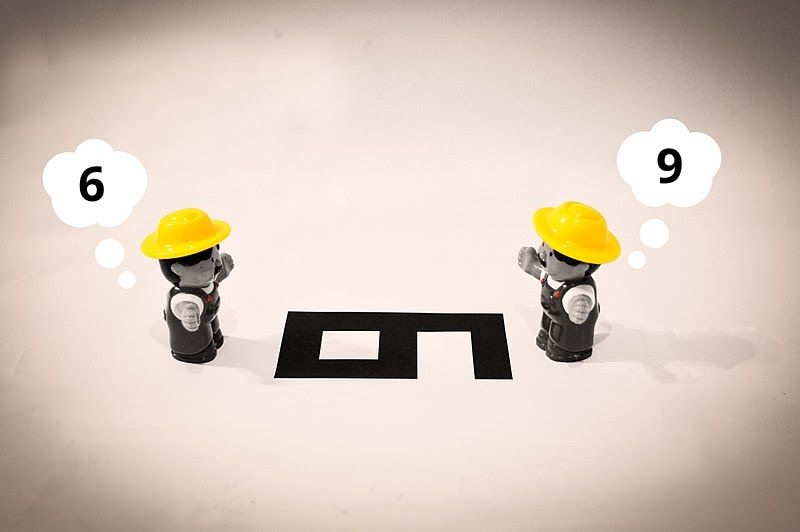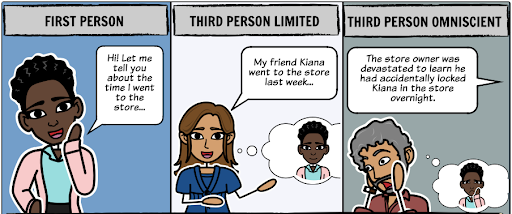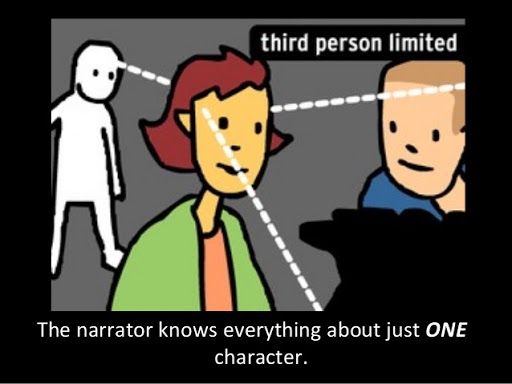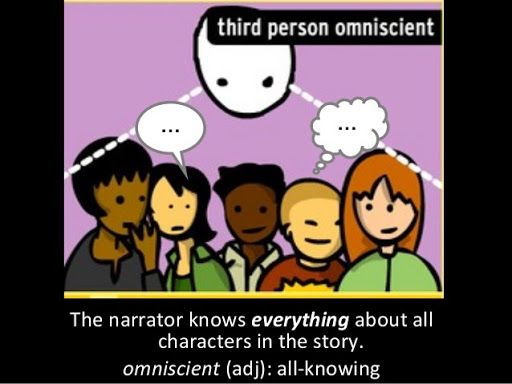Education - Point of View
Welcome back to another Educational piece in April's Aspire! This month we will be talking about POV.

POV stands for Point of View and is sometimes called the narrative mode. This is the narrator's position in the description of events. Is one of your characters telling the story, or is an all-knowing narrator telling it? Every story has a point of view. You have several different options when choosing a POV and we will go through each of them here.
The reason POV is so important, is because everything you write is based on the POV. It determines the way you write everything. If you get the POV wrong, you will lose readers. The story will come across as unconvincing, or you may even confuse your readers. It is very important to keep POV consistent throughout the story.

Choosing the right POV can have several effects, which you can use to your advantage. For example, choosing the right POV can help you create tension; especially when the reader knows more than the character. Or, if you so choose, it can do the opposite and create comedy, when the character knows so much less than the reader and other characters that it becomes funny.
Through the right POV you can also create an unreliable narrator. This is when the character knows more than the reader and withholds information from us. A character can either withhold information because it simply didn't seem important to them, or because the character wants the reader on the wrong track.
Sometimes you want to convey more information or events than the MC experiences themselves. In that instance, you can use POV to switch away from the MC and show the reader more of the world that you've created.

There are four types of POV and we will discuss each of them and talk about their pros and cons.
Firstly, there is the first person POV. A story with a first person POV is told from the "I" perspective. The main character is telling their story, and everything that happens is their experiences and thoughts and feelings.
Pros: The most important advantage of the first person POV is that it makes for a very intimate voice. It is easy for readers to relate to this character and to understand them, because we are literally inside their head. It generally allows readers to dive deeper into the main character than any other POV.
Cons: First person POV is limited to the knowledge the main character has. If something important is happening that the MC does not know about, there is no way to convey it to the reader in this POV. It is also biased; the story is confined to the MC's perspective on the events. If your MC is convinced their partner is cheating on them, then us readers are convinced about that too, whether it's actually true or not. It may not come as a surprise that you can use this to your advantage as well.
Secondly, there's the second person POV. In this type of story, "you" are the main character. The story is told to you as if you are a character in the story, as if all the events are happening to you. This type of POV is more common in non-fiction than it is it fiction, however it has amassed a certain popularity here on Wattpad.
Pros: Reading about themselves might make the story feel more personal to the reader. It might draw them in more and make them feel like they're part of the action.
Cons: The second person POV has the huge downside of (usually, especially in longer works) having to incorporate abbreviations in the story; things like Y/N (Your Name) and the like. It also incorporates facts about the MC that may not be true for the reader (if the main character's favourite food is pizza, but the reader hates pizza, it'll make it harder for them to be drawn in). Many readers find this very distracting, which is probably why it is not very popular.

Thirdly, there's the third person limited POV. This is where the story follows a character and his or her experiences and thoughts and feelings are relayed to us. Experiences and thoughts of other characters are not relayed to the reader. This is the most common POV in fiction.
Pros: With third person limited, the narrator can choose to look over the MC's shoulder, or to enter the character's mind. This allows the author the same closeness as first person, but with the ability to take a step back and offer a wider view of the situation; a view that isn't necessarily bound by the MC's opinions and biases. That way, the author can help the reader understand the MC even better sometimes than the MC understands themselves.
Cons: Just like with first person, third person limited is, well, limited. The author can only tell us about things that the MC has experienced (directly or indirectly).

And lastly, we have third person omniscient. This is where the narrator has full access to the experiences, thoughts and feelings of all the characters in the story. Therefore, the narrator has the power to talk about any character's perspective, speak about any event at any point in the timeline, and can even comment on things that have happened or are yet to happen.
Pros: As the author you know everything that happens at any place and time in the story. Through this third person omniscient POV, you can use all of this information and build it up to the best story possible. This type of POV is very useful for stories with many characters, or where the events are spread out over long periods of time (several generations, for example).
Cons: The biggest downside of this POV is its pitfall: aspiring authors have a tendency to choose this POV and tell us everything every character thinks throughout the scene. This is not how third person omniscient works; in fact, this is called head-hopping and is considered an error. Make sure every scene focuses on a specific character and stick to that character for the duration of at least that scene.

How do you choose between these four POV types? Sometimes it's hard to figure out which POV works best for your story. Especially if you haven't been writing for very long, or have only written in one type of POV before, it may be difficult to choose one for your next story. These four steps should make the process a little easier for you.
1. Consider the story you want to tell; know your story well. Who is the main character and what is the main plotline? Is it enough for readers to know only what happens to the MC or will there be events outside the MC's knowledge, that the reader absolutely must know (in which case third omniscient might be best)? Is the story character-driven (in which case first person might work best) or plot-driven? Do you want readers to dive inside the mind of your MC, or do you need a little more distance to cover a wider view of the situation (in which case you might want to go with third limited)? Consider also the amount of information you want to convey to the reader: is there information you want to keep a mystery until later on?
2. Know the different kinds of POV. In this article we have outlined the basics of the different types of POV. The pros and cons are especially useful when considering which one to go with. If you're still unsure about how a certain type of POV works, read a story written in that POV and see how the author handles it. Knowledge is power.
3. Try the different POV's out. Sometimes the only way to know what works best, is to just try it out. Write the first chapter or the first scene from different POV's and get a feel for what works best for this particular story.
4. Once you have chosen a POV, make sure you establish it right from the beginning. Your first paragraph or two should make it clear to the reader which POV your story is written in.

Can you use multiple POVs in your story?
Rules are there to be broken. If you know how to handle your POV's well, and you deem it necessary, you can use multiple POV's in your story. The advantage of using multiple POV's is that you can help readers understand your world better, and the overall events that are happening, even if they are outside the MC's immediate experience. This can lead to the reader knowing more than the characters, which can cause what's called dramatic irony; where the reader understands what's happening in a situation, while the characters are unaware. It can lead to readers going "No, don't do that!" which causes a feeling of investment in the story and creates tension and suspense.
Another reason to use multiple POV's is to get all of the necessary information across to the reader. For example, if there is a mystery to be unraveled and you want your readers to know something that the MC doesn't, you'll have to switch. If you want your readers to understand how certain events impact different areas of the world, different class systems, or different groups of people, you might have to switch POV. If you want your readers to understand how a large event has changed the world, while your MC was born afterwards, you may need to switch POV.
What's also important to remember, if you do decide to go for multiple POV's, is that you don't have to use the same POV for each character you switch to. For example, one character might be written in first person, while another is written in third. This might also help with showing the reader, right at the start of the scene, whose POV it is written from. It is very important to make this clear for every scene, so as not to confuse the reader.
Just remember: it is often best to stick with one POV. Swapping often can cause readers to become confused or bogged down with too many character voices, and will undermine the continuity of the story. Most important, however, is to be consistent. Even if you do switch POV every now and then, do it in a consistent way.
Naomi - NDeMeer
Team Of Dreams

Bạn đang đọc truyện trên: Truyen247.Pro